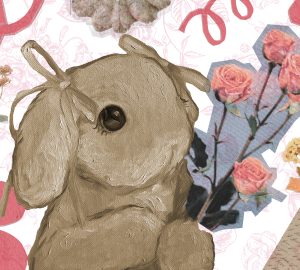‘The Palace of the White Skunks’: review
Graphic by Julie Tran.
“The Palace of the White Skunks” is a miserable read if your taste is more inclined toward direct and concise prose that unfolds into a neat dramatic arc with a clear beginning and end. IF, however, you like poetic ramblings that brush against topics regarding pubescent sexuality and geopolitical tragedy within the span of stanzas, you might find yourself a fan of Reinaldo Arenas.
The Cuban poet lived and wrote in the wake of the Cuban Revolution, and his work reflects his experience living through a radical time of transformation that just happened to coincide with his own biological and psychological development. He drew upon those memories to create what is called the Pentagonia series, comprising of four books with “The Palace of the White Skunks” as the second installment. Preceding it is “Singing from the Well” and following it are “Farewell to the Sea” and “The Assault.” Most of these works were completed either during or between bouts of imprisonment, convicted by the Cuban government. The charges were either those of dissident political criticism or for the far more severely regarded crime of being homosexual.
Like all good artists, he was able to channel his persecution and suffering from the state level into his work, resulting in the execution of this series. “The Palace of the White Skunks” almost feels like a recoil into one’s past, not through a filtered lens of nostalgia but a deep, brooding re-experiencing of those events through poetic language that both elevates and obscures the factual representation of what happened during those early years of the revolution.
There is little lightness in this or in any of his books besides perhaps a whimsical lyricism that sprouts up in the interstices of abject suffering and misery. The five sections of part two are appropriately titled Agony One, Agony Two, etc. Rape, torture, murders and beatings abound in aphorism and allusion, but these aren’t the most desolate images to me. The solitude of being cut off not just from the outside world but from one’s own family and ultimately from oneself. The crushing weight of being alone has been often remarked upon, and you can bounce around Instagram’s explore page for less than five minutes before finding a meme lamenting on the poster’s social isolation and lack of purpose, but as with most cases, how this is expressed is more important than the expression itself.
For me, it’s the scenes where Fortunato, the protagonist of sorts, is alone and lost in fantasy, dreaming he was someone else looking out of a window where muted sunlight pours in. Those solitary moments when he reflects on the scent of rotten guava mixing with his sister’s cheap perfume as she readies herself to go on a date. The narration switches to her perspective, through Fortunato’s imagination, as she is locked in the bathroom with her mother desperately trying to break down the door to use the toilet.
There are many examples of oneiric art or at least art that is interpreted as such, and the reason for that is often due to many artists’ expression through hallucinogenic images and illogical construction. Several reviewers have called “The Palace of the White Skunks” “dreamy” or “phantasmagorical,” and while these are applicable to certain images, I find the whole of the work to be reminiscent of a memory of a daydream with emphasis placed on the memory. The intent isn’t to portray a cuban adult’s dreams of his childhood, but rather to dive back into those memories of growing up in a rural backwater community while the country around them plunged into chaos and violence that slowly encroached upon them until they faced that brutality face to face. The book is a return to imagination, a return to watching suffering unfold without understanding the concept of suffering and filling in that void with poetic images that have a logic of their own. But ultimately, it is a return to agony.























